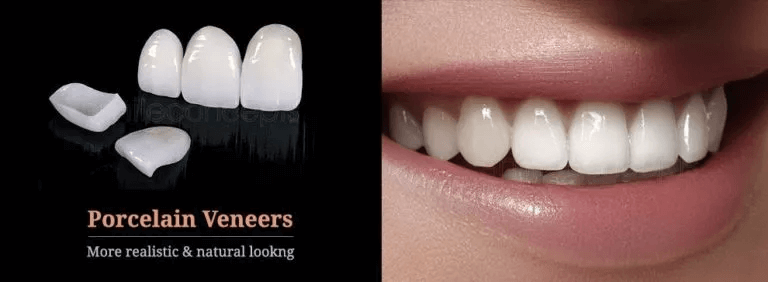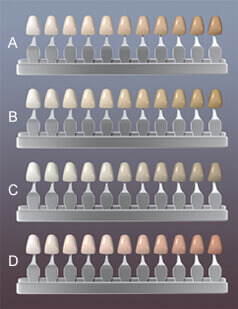
Composite veneers vs porcelain veneers—which one is better? Your dentist will go over these two options with you and offer advice before treatment, but ultimately, the choice is yours. In a consultation, patients' ability to make well-informed choices is related to their level of background knowledge on the topic.
Cosmetic procedures in particular are highly dependent on the patient's expectations, way of life, dietary and drinking habits, treatment budget, etc. Since the dentist cannot master all of these issues, your input is essential. To help you prepare for your cosmetic dentistry consultation, let us take a closer look at two main components of these procedures.
Composite Veneers: Application, Durability, and Maintenance

Composite resin veneers are a type of filling material. Not all varieties are created equal; some are more suited for filling gaps, while others are more aesthetically pleasing. All of their application processes happen in the oral cavity.
Modifying the hue
The customization of color is the most challenging task for dentists during application. Getting the right shade in tiny fissures and cracks is a smooth process, but when it comes to bigger fillings, it gets trickier because the light transmittance changes with bonding thickness. In addition, while all brands utilize industry-standard techniques to modify color, the ingredients employed differ significantly, which increases the dentist's concerns about the expected aesthetic result.
Composite veneers lifespan
While color adjustment is indeed a significant drawback of composite veneers, their primary disadvantages stem from their limited durability and frequent need for maintenance. On average, composite veneers last for 5 years. Typically initiating with minor breakages towards the conclusion of the third year, it peaks with the emergence of spots and more noticeable cracks in the fifth year. By the 7th year, decorative frontal composite veneers dissolve and end up with particles in our mouths.
Trimming for composite veneers
Another misconception about composite veneers is that “no abrasion is needed for them.” Actually, this is correct in the case of a single tooth or a local area. Nevertheless, if the teeth are larger than they should be and you plan to use composite veneers for your smile design, the dentist will need to abrade the edges of your teeth. Furthermore, it may be necessary to perform teeth abrasion, even when composite bonding is employed, to ensure proper alignment of the teeth, attain the intended smile width, and obtain the smile line accurately.
Do composite veneers stain
Composites are also prone to stains and lose their sheen rapidly, which is another drawback of applying them. For front areas, it is recommended to polish them at least once a year.
Composite bondings offer significant benefits, including convenient color adjustments for minor defects and a comparatively extended lifespan in these specific areas. Furthermore, upon reaching the end of their lifespan, they can be effortlessly extracted and substituted with a fresh one, free of any damage to the teeth.
Porcelain Veneers: Longevity, Customization, and Application Process

Porcelain veneers have a substantially longer lifespan compared to composites. Porcelain veneers typically last for about 10 to 15 years. If the veneer becomes discolored, stained, cracked, etc., by the end of this period, you have the option to get a replacement. Even after 15 years, veneers may still look like new, and you can schedule a replacement appointment 5 years later.
When getting porcelain veneers, unlike with composites, your mouth will not need to function as a dental laboratory.The necessary arrangements are conducted within a controlled laboratory setting, based on precise measurements and 3D images. Consequently, you will obtain your new set of teeth through a brief procedure. Porcelain veneers come in a wide variety of styles, each one designed to meet the unique requirements of individual patients. Zirconia veneers have a track record of success in regions with a high chewing load. Front areas, on the other hand, are suitable for thinner laminate or emax veneers, depending on the patient's gum health, eating habits, and oral hygiene routine.
Porcelain veneers shades

Unlike with composites, the dentist is not put in danger when selecting shades for porcelain veneers. The optimal colors can be chosen from pre-existing color catalogs by considering the patient's preference. Subsequently, the veneers are fabricated and promptly affixed either on the same day or within a few days.
Porcelain veneers, with a nearly century-long history, surpass composite veneers in all aspects. Nevertheless, it is important not to overlook the capacity of composite veneers to rectify minor imperfections. Dentists can derive advantages from composites for these areas and attain optimal outcomes through a hybrid treatment.

